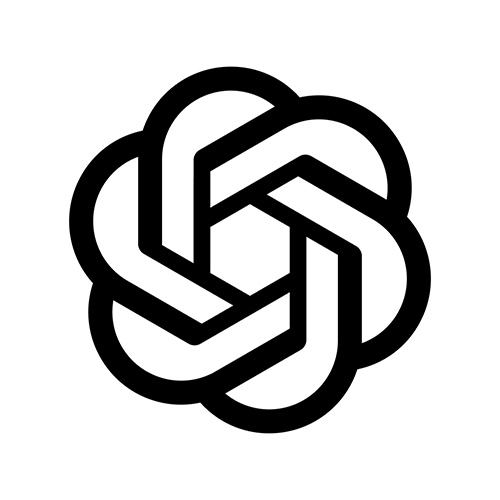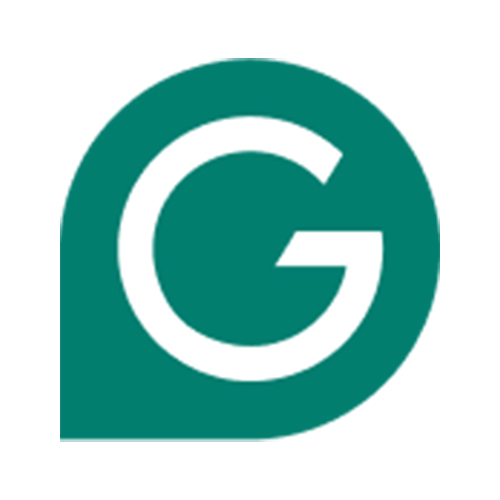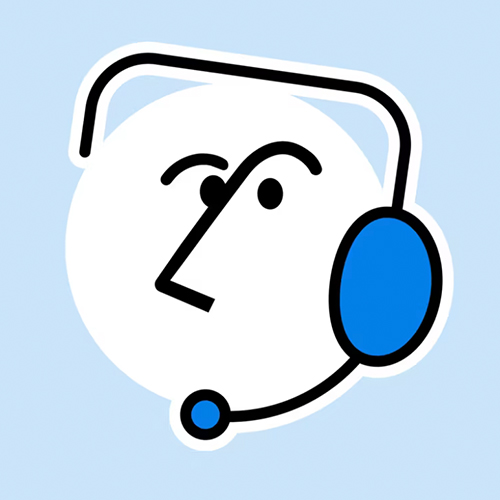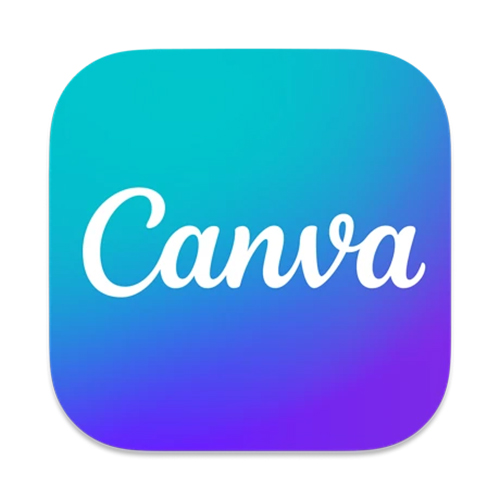
The 5 Free AI Tools That Actually Move the Efficiency Needle
At Big Pixel, we live in the trenches with startups.
We’ve seen the midnight rewrites, the missed follow-ups, the campaigns that stall because the tools were never built for the way the team actually works.
We talk about it every week on our Biz/Dev podcast — the struggle, the grind, and the little triumphs that keep entrepreneurs pushing forward.
Building something new is never clean, and it doesn’t need to be made harder with bloated systems and endless complexity.
Not everything has to be convoluted and expensive.
Sometimes the smartest solutions are the ones hiding in plain sight.
AI isn’t always the bad guy.
When used well, it’s a layer of efficiency that amplifies your business instead of replacing the people behind it.
And the truth is, some of the most impactful AI tools don’t cost a thing.
These five are free.
They’re simple.
They’re already making an outsized impact for founders and operators who are tired of burning hours on the wrong work.
And if you’re serious about growing, they’ll be your best allies.

ChatGPT
Writing is where businesses quietly lose the most time.
Every founder knows the feeling of staring at a blinking cursor, trying to craft the perfect investor update or customer response.
Every manager has spent an hour shaping process notes into something the team can actually use.
Every support lead has burned half a day rewriting replies so they sound consistent. It’s exhausting — and it stalls momentum.
ChatGPT’s free version changes the rhythm.
Instead of starting from nothing, you start with something.
A half-formed outline becomes a full SOP in seconds. Meeting notes become a digestible recap. An investor email draft appears in under a minute, ready for you to edit in your own voice.
And this isn’t just theory. Octopus Energy leaned on GPT-powered bots to handle almost half of its customer service conversations.
Thousands of hours of repetitive typing disappeared, and their human team got to focus on higher-value work.
The same principle works for a two-person shop. That email that would have taken your evening is now a five-minute job.
Those hours add up, and every one you get back is energy you can put into building, selling, or sleeping.

Grammarly
Reputation lives and dies on communication.
A sloppy proposal, a typo in a pitch deck, or a sharp-sounding email can undo months of trust in a single moment.
Startups don’t have editors on staff, and even large companies can’t vet every line of copy before it ships. Yet every message your team sends either builds confidence or chips away at it.
That’s where Grammarly earns its keep — even on the free plan.
It runs in the background, smoothing tone, clarifying phrasing, and making sure what you meant is what people read.
The founder firing off an update at 2 a.m. doesn’t come across as curt.
The sales team scattered across time zones still speaks with one consistent voice. It’s an invisible layer of quality control that protects credibility.
Grammarly’s acquisition of the email platform Superhuman in 2025 points to where this is going: AI baked into the tools where communication happens most.
The goal is speed and clarity without sacrificing professionalism.
That’s the kind of safeguard businesses need when their reputation is only ever one message away from being questioned.

Notion AI
Every business has lived through the “we’ll follow up on that” moment.
The call ends, everyone agrees on next steps, and by the following week the details are scattered across Slack threads, half-finished notes, or someone’s memory.
Multiply that across clients, projects, and departments, and you get a serious drain on efficiency.
Notion AI closes that gap. Its free tier lets you generate summaries, pull out tasks, and store decisions in one place that’s actually searchable.
Instead of an employee spending an hour rewriting notes, the output is ready in seconds. And because it lives inside Notion, the record doesn’t disappear when someone leaves the company — the knowledge stays put.
The payoff is obvious.
For lean startups, it means shifting hours from cleanup to execution. For larger firms, it’s resilience.
Knowledge doesn’t vanish with turnover, and projects don’t stall because no one can remember who was supposed to own the next step.
Meetings stop being wasted energy and start producing action.

Canva
A brilliant idea can fall flat if it looks amateur. Startups with game-changing products lose credibility the moment they show a pitch deck that feels dated.
Established companies face the opposite problem: design bottlenecks.
Campaigns get delayed for weeks while requests sit in creative queues. Either way, opportunity slips while teams wait for polish.
Canva’s free AI features put professional design in reach immediately.
Magic Write generates on-brand copy. Magic Design jumps you into layouts that already look sharp.
Text-to-Image creates custom visuals to drop straight into your deck or campaign. The result isn’t “good enough” — it’s credible, polished work that keeps momentum alive.
Adobe built Firefly for design pros.
Canva democratized that power and gave it away for free. That’s why it’s become the default design tool for founders who need to look bigger than they are and teams who can’t afford to let design bottlenecks kill their timeline.
When your materials look the part, doors open. Canva gives you that advantage without the cost.

Zapier AI
The most damaging inefficiencies are often invisible.
A lead comes in through Gmail but never makes it into the CRM. A form submission goes unnoticed in someone’s inbox.
A new customer signs up and doesn’t get a welcome email. No alerts go off. No one panics. But opportunities slip away in silence.
Zapier’s free plan covers 100 automated tasks a month. That’s more than enough to wire your highest-leak points together.
Leads flow straight into the CRM. Form fills ping your team instantly. Payments trigger thank-you emails without anyone touching a keyboard.
These aren’t complex automations. They’re the small, reliable hand-offs that keep your system from bleeding.
For startups, this means fewer balls dropped when everyone’s already stretched thin.
For bigger companies, it means consistency across workflows without adding headcount.
Automation isn’t just about scale — it’s about making sure the basics always happen. And when they do, growth compounds.
Quick-Start Playbook
If you want the fast version, here it is.
These are the same five tools boiled down to the high points — the starter kit you can put into play this week.
- ChatGPT: Get past the blank page. Draft updates, SOPs, and emails in minutes.
- Grammarly: Guard your reputation. Free tone and clarity checks keep messages sharp.
- Notion AI: Stop losing details. Auto-summaries and task lists turn meetings into action.
- Canva: Look credible fast. Free AI design makes decks and campaigns professional.
- Zapier AI: Plug the leaks. Automate the hand-offs so leads and follow-ups never slip.
These are practical fixes that address the places where businesses quietly lose time and credibility every single day.
Efficiency isn’t optional.
Startups can’t afford to look sloppy, and established companies can’t afford to waste talent on work that shouldn’t exist.
Free AI tools won’t set your strategy or replace systems, but they will stop the silent leaks that steal your momentum.
Every business leader eventually sees the true cost of inefficiency.
Some pay for it in lost opportunities, others in added payroll to patch gaps, and many in the exhaustion of teams doing work that software should handle.
Smarter leaders protect efficiency early.
These five tools are a place to start.
They’re free, proven, and available now.
They give back time, clarity, and credibility — so leaders can spend their energy on the work only they can do.

The 5 Free AI Tools That Actually Move the Efficiency Needle
At Big Pixel, we live in the trenches with startups.
We’ve seen the midnight rewrites, the missed follow-ups, the campaigns that stall because the tools were never built for the way the team actually works.
We talk about it every week on our Biz/Dev podcast — the struggle, the grind, and the little triumphs that keep entrepreneurs pushing forward.
Building something new is never clean, and it doesn’t need to be made harder with bloated systems and endless complexity.
Not everything has to be convoluted and expensive.
Sometimes the smartest solutions are the ones hiding in plain sight.
AI isn’t always the bad guy.
When used well, it’s a layer of efficiency that amplifies your business instead of replacing the people behind it.
And the truth is, some of the most impactful AI tools don’t cost a thing.
These five are free.
They’re simple.
They’re already making an outsized impact for founders and operators who are tired of burning hours on the wrong work.
And if you’re serious about growing, they’ll be your best allies.

ChatGPT
Writing is where businesses quietly lose the most time.
Every founder knows the feeling of staring at a blinking cursor, trying to craft the perfect investor update or customer response.
Every manager has spent an hour shaping process notes into something the team can actually use.
Every support lead has burned half a day rewriting replies so they sound consistent. It’s exhausting — and it stalls momentum.
ChatGPT’s free version changes the rhythm.
Instead of starting from nothing, you start with something.
A half-formed outline becomes a full SOP in seconds. Meeting notes become a digestible recap. An investor email draft appears in under a minute, ready for you to edit in your own voice.
And this isn’t just theory. Octopus Energy leaned on GPT-powered bots to handle almost half of its customer service conversations.
Thousands of hours of repetitive typing disappeared, and their human team got to focus on higher-value work.
The same principle works for a two-person shop. That email that would have taken your evening is now a five-minute job.
Those hours add up, and every one you get back is energy you can put into building, selling, or sleeping.

Grammarly
Reputation lives and dies on communication.
A sloppy proposal, a typo in a pitch deck, or a sharp-sounding email can undo months of trust in a single moment.
Startups don’t have editors on staff, and even large companies can’t vet every line of copy before it ships. Yet every message your team sends either builds confidence or chips away at it.
That’s where Grammarly earns its keep — even on the free plan.
It runs in the background, smoothing tone, clarifying phrasing, and making sure what you meant is what people read.
The founder firing off an update at 2 a.m. doesn’t come across as curt.
The sales team scattered across time zones still speaks with one consistent voice. It’s an invisible layer of quality control that protects credibility.
Grammarly’s acquisition of the email platform Superhuman in 2025 points to where this is going: AI baked into the tools where communication happens most.
The goal is speed and clarity without sacrificing professionalism.
That’s the kind of safeguard businesses need when their reputation is only ever one message away from being questioned.

Notion AI
Every business has lived through the “we’ll follow up on that” moment.
The call ends, everyone agrees on next steps, and by the following week the details are scattered across Slack threads, half-finished notes, or someone’s memory.
Multiply that across clients, projects, and departments, and you get a serious drain on efficiency.
Notion AI closes that gap. Its free tier lets you generate summaries, pull out tasks, and store decisions in one place that’s actually searchable.
Instead of an employee spending an hour rewriting notes, the output is ready in seconds. And because it lives inside Notion, the record doesn’t disappear when someone leaves the company — the knowledge stays put.
The payoff is obvious.
For lean startups, it means shifting hours from cleanup to execution. For larger firms, it’s resilience.
Knowledge doesn’t vanish with turnover, and projects don’t stall because no one can remember who was supposed to own the next step.
Meetings stop being wasted energy and start producing action.

Canva
A brilliant idea can fall flat if it looks amateur. Startups with game-changing products lose credibility the moment they show a pitch deck that feels dated.
Established companies face the opposite problem: design bottlenecks.
Campaigns get delayed for weeks while requests sit in creative queues. Either way, opportunity slips while teams wait for polish.
Canva’s free AI features put professional design in reach immediately.
Magic Write generates on-brand copy. Magic Design jumps you into layouts that already look sharp.
Text-to-Image creates custom visuals to drop straight into your deck or campaign. The result isn’t “good enough” — it’s credible, polished work that keeps momentum alive.
Adobe built Firefly for design pros.
Canva democratized that power and gave it away for free. That’s why it’s become the default design tool for founders who need to look bigger than they are and teams who can’t afford to let design bottlenecks kill their timeline.
When your materials look the part, doors open. Canva gives you that advantage without the cost.

Zapier AI
The most damaging inefficiencies are often invisible.
A lead comes in through Gmail but never makes it into the CRM. A form submission goes unnoticed in someone’s inbox.
A new customer signs up and doesn’t get a welcome email. No alerts go off. No one panics. But opportunities slip away in silence.
Zapier’s free plan covers 100 automated tasks a month. That’s more than enough to wire your highest-leak points together.
Leads flow straight into the CRM. Form fills ping your team instantly. Payments trigger thank-you emails without anyone touching a keyboard.
These aren’t complex automations. They’re the small, reliable hand-offs that keep your system from bleeding.
For startups, this means fewer balls dropped when everyone’s already stretched thin.
For bigger companies, it means consistency across workflows without adding headcount.
Automation isn’t just about scale — it’s about making sure the basics always happen. And when they do, growth compounds.
Quick-Start Playbook
If you want the fast version, here it is.
These are the same five tools boiled down to the high points — the starter kit you can put into play this week.
- ChatGPT: Get past the blank page. Draft updates, SOPs, and emails in minutes.
- Grammarly: Guard your reputation. Free tone and clarity checks keep messages sharp.
- Notion AI: Stop losing details. Auto-summaries and task lists turn meetings into action.
- Canva: Look credible fast. Free AI design makes decks and campaigns professional.
- Zapier AI: Plug the leaks. Automate the hand-offs so leads and follow-ups never slip.
These are practical fixes that address the places where businesses quietly lose time and credibility every single day.
Efficiency isn’t optional.
Startups can’t afford to look sloppy, and established companies can’t afford to waste talent on work that shouldn’t exist.
Free AI tools won’t set your strategy or replace systems, but they will stop the silent leaks that steal your momentum.
Every business leader eventually sees the true cost of inefficiency.
Some pay for it in lost opportunities, others in added payroll to patch gaps, and many in the exhaustion of teams doing work that software should handle.
Smarter leaders protect efficiency early.
These five tools are a place to start.
They’re free, proven, and available now.
They give back time, clarity, and credibility — so leaders can spend their energy on the work only they can do.



